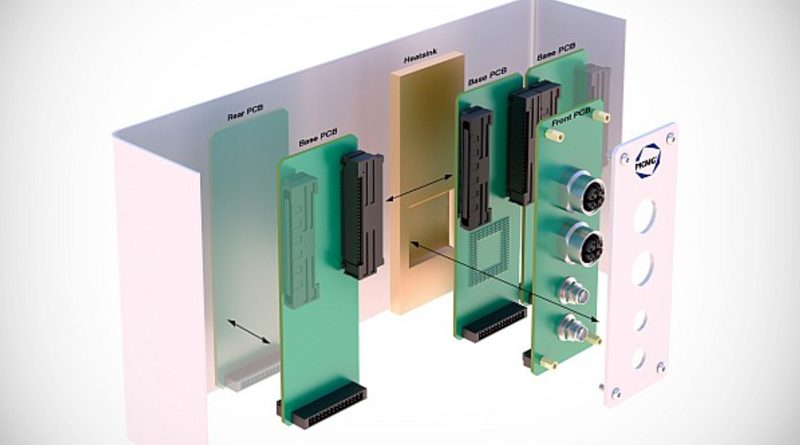PICMG Committee to Develop New Modular Box PC Open Specification
ModBlox7 introduces an open standard to proprietary multi-billion USD market
PICMG announces a technical subcommittee formed to create a new PICMG form factor specification named ModBlox7. This specification will transform the multi-billion-dollar Box PC industry by introducing an open standard to what is currently a proprietary market. Box PCs are highly integrated computing solutions, but the lack of interoperability limits the ability of end-users to achieve truly cost-effective and sustainable solutions.
The ModBlox7 specification will describe a compact and modular Box PC that is flexibly configurable and can be wall-mounted, snapped onto a DIN rail, or integrated into a 19” subrack. The height and depth are fixed; the width is variable in multiples of 7HP. The maximum length is 84HP. The modular Box PC designs will be very robust, support passive conductive cooling, and be used for demanding applications such as railway, avionics, mobile machines, and autonomous mobility as well as machinery in discrete manufacturing and controls in critical process industry infrastructures. The result of the committee’s work will be a basic specification describing the housing mechanics, the modular functional units, and the electrical interconnection of the units. The standard will guarantee interoperability of units for manufacturers as well as interoperability for users of the Box PC while combining the advantages of modular systems and highly integrated cost-sensitive Box PC solutions.
The open specification will contain the following requirements or specified functions:
Cost-efficient design with minimum mechanical effort. No additional backplane or heat sink will be required. Coplanar board-to-board connectors couple each unit to its neighbor and route defined I/O interfaces (PCIe and USB) to the next board.
Modular, functionally encapsulated plug-in units in multiples of 7HP width pitch. Units form functional assemblies such as power supply, CPU, switch, and I/O. Units can be multiples of 7HP, e.g., implement more interfaces or functionality in a single building block assembly.
This results in a wide range of device combinations in a modular design in increments of 7HP (21HP, 28HP, 42HP to 84HP), making it cost-efficient even in small quantities.
Each modular computing unit can host a stack of 1, 2, or 3 PCBs – depending on the complexity. Separation is typically made according to the front I/O and the power and communication requirements between the host unit and its expansion units.
Flexible mounting with minimal accessory components for wall, din-rail, and 19″ subrack installations.

